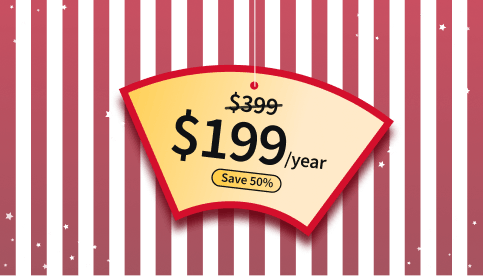How to Create a Brand Mood Board
Learn how to create a brand mood board using specific tools, such as Pinterest and Canva, to help you brainstorm ideas for brand marketing campaigns.
![[Featured Image] Two marketing specialists review photos and clippings to create a brand mood board.](https://d3njjcbhbojbot.cloudfront.net/api/utilities/v1/imageproxy/https://images.ctfassets.net/wp1lcwdav1p1/1BbJ3HvDuFMUYeywewoou1/5fbce8e8cd1be6199aa79748e4674a93/GettyImages-183748651.jpg?w=1500&h=680&q=60&fit=fill&f=faces&fm=jpg&fl=progressive&auto=format%2Ccompress&dpr=1&w=1000)
Key takeaways
Brand mood boards are the first step in creating visual inspiration for your business’s brand. Here are some important facts to know:
According to HubSpot’s 2025 State of Marketing Report, creative, brand-led marketing is on the rise, with 92 percent of marketers planning to continue or increase their investments in brand awareness campaigns [1].
A brand mood board is similar to a collage, and it can be developed either physically or digitally.
You can advance in your marketing career by becoming a brand strategist or a brand manager.
Discover how to create a mood board for your brand using design tools and marketing skills. Afterward, consider enrolling in the Adobe Graphic Designer Professional Certificate. In as little as four months, you’ll have the opportunity to learn the essentials of graphic design and apply your skills to real-world projects.
What is a brand mood board?
A brand mood board typically encapsulates the imagery, goals, words, and inspiration you have for your brand as a whole or an upcoming brand strategy. You may include your brand’s colors, fonts, and photos that speak to what you want to accomplish or demonstrate with your business or marketing campaign.
Why every brand needs a mood board
When developing your brand, a mood board can help streamline the brainstorming process by providing a visual display of your ideas for you and your collaborators. When words don’t convey your inspiration or idea, look to a mood board to tell the story you’re trying to create.
Having multiple marketing creatives develop mood boards also allows your team to see various perspectives of complex projects and eventually agree on the brand you want to create and the messages you want to convey.
According to HubSpot’s 2025 State of Marketing Report, creative, brand-led marketing is on the rise, with 92 percent of marketers planning to continue or increase their investments in brand awareness campaigns [1].
What is the difference between a brand book and a mood board?
A brand book and a brand mood board convey similar ideas, but you’ll develop a mood board at the start of the branding process and the brand book at the end.
A brand book contains important brand information, including the designated brand colors, your brand’s logo, the font you prefer, and specific branding designs. This information becomes confined to a single sheet that a graphic designer can use to make marketing materials.
A brand mood board represents the first step in creating a brand book. Before you can decide on colors, fonts, and logos, you need to create a collage of inspiration and narrow down ideas. If a brand book is the final product, a mood board is the first draft.

Create a brand mood board: Step-by-step guide.
To create a brand mood board, whether by hand or digitally, follow some essential steps to make the process operationally efficient. For example, you can determine an audience for your brand or establish a goal for your business marketing plan.
Discover the steps to creating a brand mood board:
Learn more: 9 Top Marketing Trends
Step 1: Set a goal.
Begin your brand mood board process by curating a specific theme and setting a clear goal. For example, your goal may be to create a new brand identity that attracts potential customers, in which case you may find yourself looking for eye-catching designs that are bold and stand out to your target audience.
Step 2: Collect materials.
Find images that represent your brand’s vibe, quotes that speak to your mission statement, and colors that complement each other to begin building your mood board. Assemble the board in a way that lets your creativity shine, whether that be within a curated template or as a collage with overlapping ideas.
Step 3: Get feedback.
Once you’ve assembled your brand mood board, you may present it to a group of team members or collaborators, or even a client, for feedback. Discuss what you like and what you’d change, and revisit your goals and intentions for the brand. Once you’ve received feedback, you can return to the mood board and begin reassembling it, removing elements that don’t fit and adding new ideas.
Tools marketers use to bring mood boards to life.
Marketers have the option to handcraft mood boards, typically with magazine or newspaper clippings and glue or tape. They may also use software to create a digital mood board.
Explore digital resources for bringing a brand mood board to life, from free resources like Pinterest to platforms with paid plans like Canva:
Canva
Cost: Free; for Canva Pro elements, plans begin at $15/month [2]
Canva offers customizable templates that allow users to create their own mood boards. You can import your own images or use elements available on Canva’s platform. Canva also offers an artificial intelligence (AI) feature, called Magic Studio™, available for pro members. With Magic Studio™, you can use prompts to erase, edit, or reposition images easily.
Figma
Cost: Free; for more features, like FigJam, plans begin at $3/month [3]
FigJam offers a mood board template that allows users to create their own brand mood board. You can start the mood board in many ways, such as with an image in the middle to build around or small images throughout that connect. This software enables easy collaboration with others, allowing them to contribute their brand ideas to the board as well.
Cost: Free, unless you decide to run paid ads [4]
On Pinterest, you can create a free account and “boards,” which act as visual folders to save “pins,” also known as images, videos, and links. You can use one board to hold all of your ideas, or create sections within your board for different aspects of your brand, such as color schemes you like or fonts you might want to use. Pinterest also has an algorithm that suggests related images or links as you begin saving pins, allowing you to continue finding pins with similar aesthetics.
Adobe Firefly
Cost: Free; plans with Creative AI begin at $9.99/month [5]
Adobe Firefly offers a mood board feature using generative AI. This digital mood board enables you to utilize pre-existing templates and input your own ideas to generate images and concepts created by AI. You can also import images found on the web or taken by you and use the generative AI feature to remix the images based on a prompt or idea.
Can AI create a mood board for me?
Yes, ChatGPT has a “moodboard” function that allows you to use artificial intelligence to build a brand mood board. To begin, you can either attach a preexisting URL to a mood board or build your board entirely within ChatGPT [6].

Brand mood board skills for marketers
As a brand marketing expert or brand strategist, you may need to harness specific skills to excel at creating a brand mood board and other marketing materials. These skills may include:
Creativity: As you develop new brand strategies and visual elements of a marketing campaign, you should demonstrate an ability to create unique ideas that speak to your brand.
Content creation: As a marketer, you may be responsible for converting a brand mood board into other promotional marketing materials, such as a brand book or social media posts. Harness your content creation skills to create visually appealing content that captures your audience's attention and drives website clicks or higher sales rates.
Competitive analysis: When creating visuals for your brand, consider looking to other companies or businesses in your industry for inspiration. Compare color schemes, mission statements, and general ideas to differentiate your brand and reach your target audience. Developing this skill often involves knowing what inspiration to look for and how to make unique content.
Explore bite-sized ideas for meaningful career growth.
Subscribe to our weekly LinkedIn newsletter, Career Chat, for career trends and tips. You can also discover free digital resources to help you build skills and grow in your marketing career:
Watch on YouTube: Level Up Your Brand with Adobe Pro Skills
Learn from industry experts: Marketing Career Path: How I Became a Brand Marketing Manager at Coursera
Expand your vocabulary: Digital Marketing Terms Every Marketer Should Know
Whether you want to develop a new skill, get comfortable with an in-demand technology, or advance your abilities, keep growing with a Coursera Plus subscription. You’ll get access to over 10,000 flexible courses.
Article sources
HubSpot. “2025 State of Marketing, https://53.fs1.hubspotusercontent-na1.net/hubfs/53/2025%20State%20of%20Marketing%20from%20HubSpot.pdf?hubs_signup-url=www.hubspot.com/state-of-marketing.” Accessed October 8, 2025.
Canva. “Canva Pricing: Compare Free, Pro, Teams, and Enterprise Plans, https://www.canva.com/pricing/” Accessed September 25, 2025.
Figma. “Plans and Pricing, https://www.figma.com/pricing/.” Accessed October 8, 2025.
Pinterest. “Get Started With a Pinterest Business Account, https://business.pinterest.com/getting-started/.” Accessed October 8, 2025.
Adobe. “Adobe Firefly, https://www.adobe.com/products/firefly/plans.html.” Accessed October 8, 2025.
ChatGPT. “Moodboards.ai, https://chatgpt.com/g/g-GW0VslHU1-moodboards-ai.” Accessed October 8, 2025.
Coursera Staff
Editorial Team
Coursera’s editorial team is comprised of highly experienced professional editors, writers, and fact...
This content has been made available for informational purposes only. Learners are advised to conduct additional research to ensure that courses and other credentials pursued meet their personal, professional, and financial goals.



